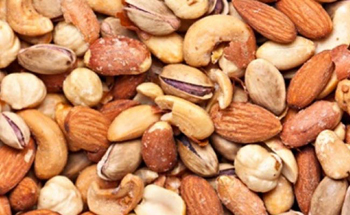London, Dec 5: Eating at least 20 grammes of nuts a day - equivalent to a handful - may lower the risk of heart disease, cancerand premature death, new research has claimed.
 The analysis of all current studies on nut consumption and disease risk showed that 20 grammes daily can cut people's risk of coronary heart disease by nearly 30 per cent, cancer by 15 per cent, and premature death by 22 per cent.
The analysis of all current studies on nut consumption and disease risk showed that 20 grammes daily can cut people's risk of coronary heart disease by nearly 30 per cent, cancer by 15 per cent, and premature death by 22 per cent.
An average of at least 20 grammes of nut consumption was also associated with a reduced risk of dying from respiratory disease by about a half, and diabetes by nearly 40 per cent, researchers said.
Scientists from Imperial College London and Norwegian University of Science and Technology analysed 29 published studies from around the world that involved up to 819,000 participants, including more than 12,000 cases of coronary heart disease, 9,000 cases of stroke, 18,000 cases of cardiovascular disease and cancer and over 85,000 deaths.
While there was some variation between the populations that were studied, such as between men and women, people living in different regions, or those with different risk factors, the researchers found that nut consumption was associated with reduction in disease risk across most of them.
"In nutritional studies, so far much of the research has been on the big killers such as heart diseases, stroke and cancer, but now we are starting to see data for other diseases," said Dagfinn Aune from the School of Public Health at Imperial.
"We found a consistent reduction in risk across many different diseases, which is a strong indication that there is a real underlying relationship between nut consumption and different health outcomes. It is quite a substantial effect for such a small amount of food," said Aune.
The study included all kinds of tree nuts, such as hazel nuts and walnuts, and also peanuts - which are actually legumes. The results were in general similar whether total nut intake, tree nuts or peanuts were analysed.
What makes nuts so potentially beneficial is their nutritional value, researchers said.
"Nuts and peanuts are high in fibre, magnesium, and polyunsaturated fats - nutrients that are beneficial for cutting cardiovascular disease risk and which can reduce cholesterol levels," said Aune.
"Some nuts, particularly walnuts and pecan nuts are also high in antioxidants, which can fight oxidative stress and possibly reduce cancer risk.
"Even though nuts are quite high in fat, they are also high in fibre and protein, and there is some evidence that suggests nuts might actually reduce your risk of obesity over time," she said.
The study also found that if people consumed on average more than 20 grammes of nuts per day, there was little evidence of further improvement in health outcomes.







Comments
Add new comment